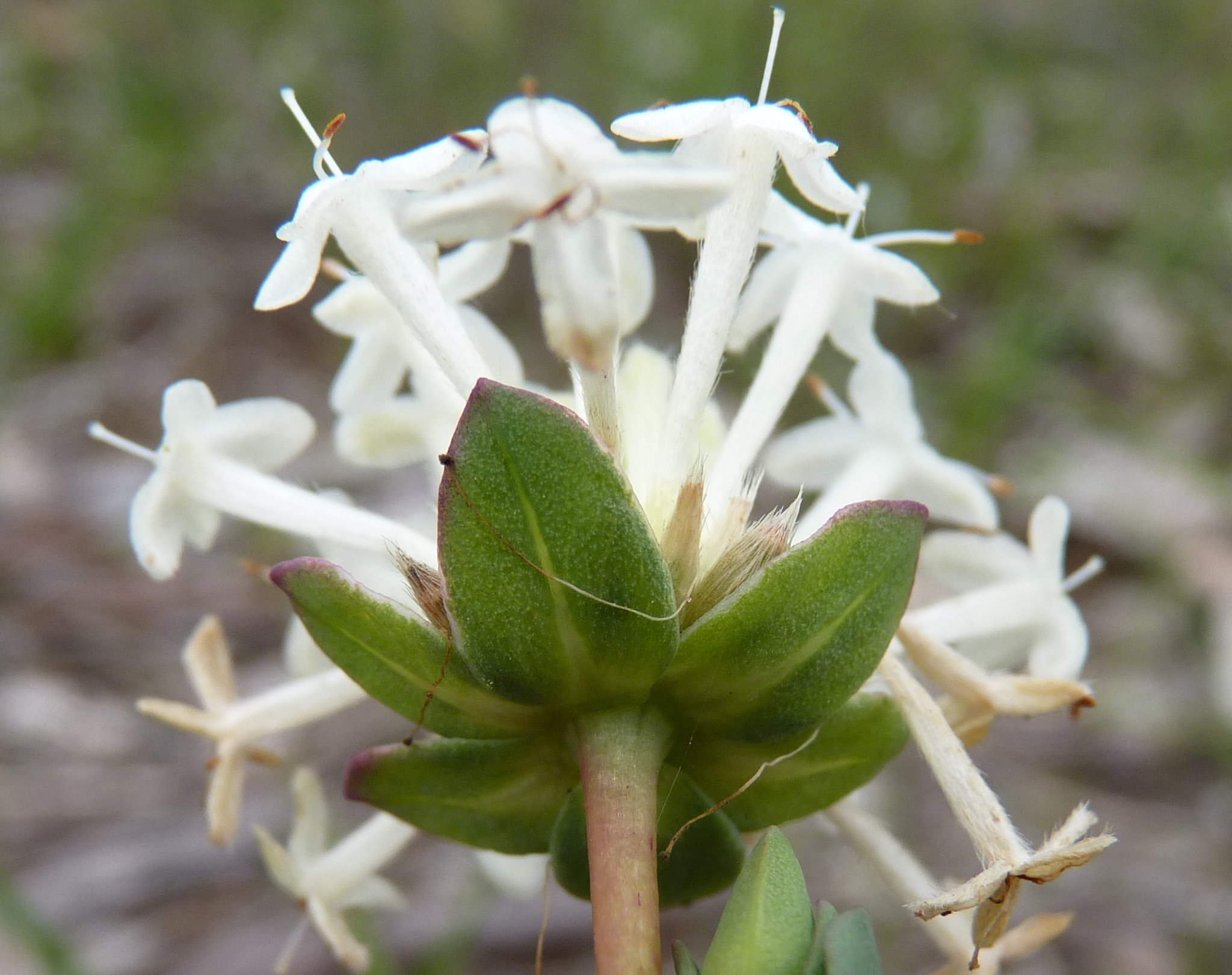
Greek pimele — soft and fat, referring to the oily seeds or succulent cotyledons.
Herbs to tall shrubs. Leaves alternate or in opposite pairs, alternating at right angles. Flower clusters mostly dense and terminal, sometimes axillary. Bracts 0-many. Sepals 4, overlapping. Petals absent. Stamens (1)2, opposite the outer sepals. Ovary with 1 chamber and 1 ovule.
Grown for the attractive formal habit and dense, mostly pompon-like flower heads. Sometimes grown in containers. A few species form attractive prostrate clumps. The common name may be derived either from the hard, rice-like seeds, or from the flower clusters which, in some species, look like bunches of rice.
Some species are regarded as toxic to stock.
About 108 species, from Australia (90 species, all endemic), Lord Howe Island (1 species), New Zealand and the Chatham Islands.
Seed and firm softwood cuttings.
Stamens (1)2; flowers generally in pompon-like heads.
Rye (1990), Rye (1999).
Source: (2002). Thymeleaceae. In: . Horticultural Flora of South-eastern Australia. Volume 3. Flowering plants. Dicotyledons. Part 2. The identification of garden and cultivated plants. University of New South Wales Press.
